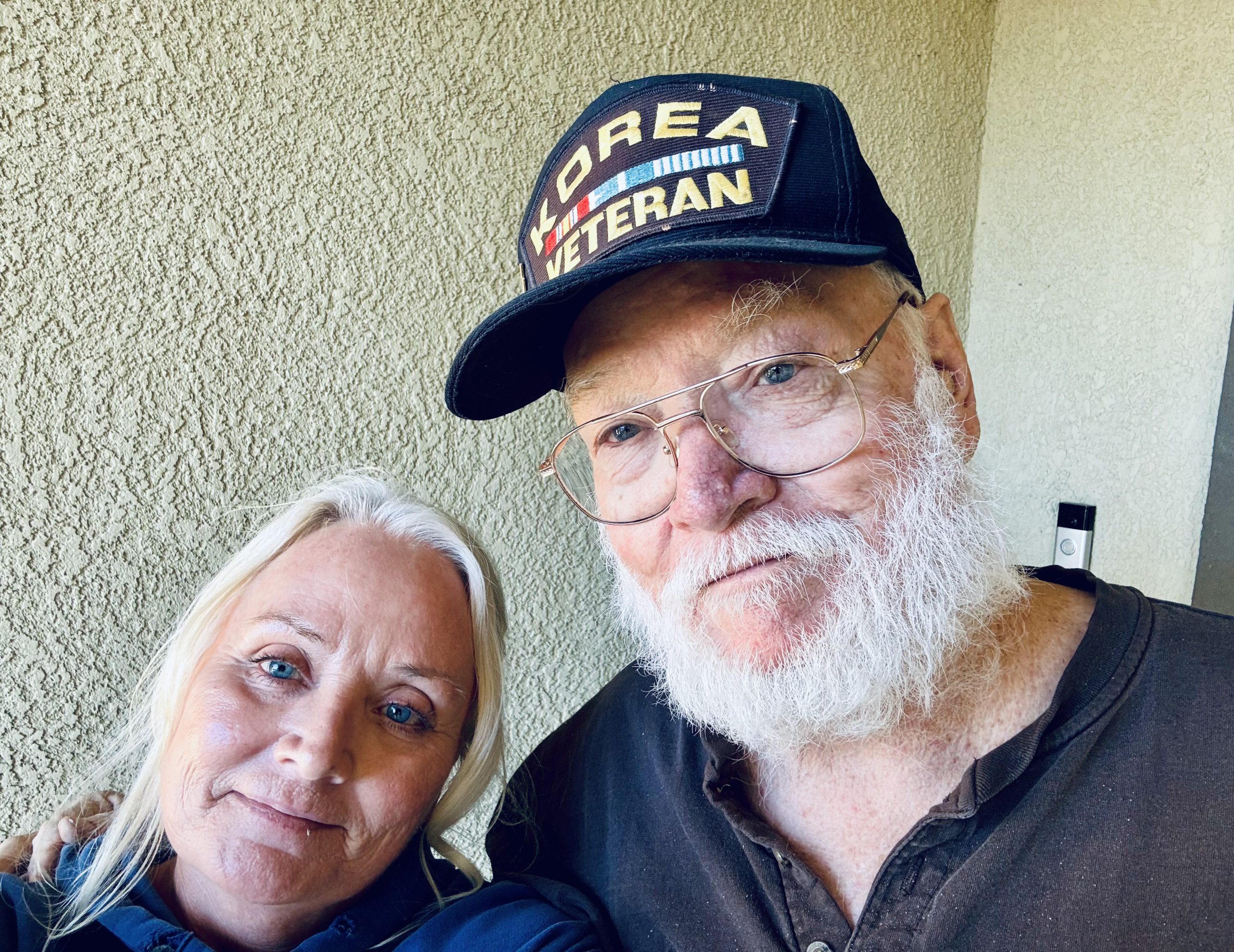Karen Williams (left), poses next to her dad, retired U.S. Army Staff Sergeant Doug Williams
Built like Fort Knox, the VA’s electronic medical record system puts a premium on security. Good at preventing data breaches, the impenetrable system is challenging if you need to share patient information with physicians outside the VA network. For Karen Williams, this disconnect is both a personal and professional concern.
The daughter of an Army veteran, Williams knows that some medical services and specialist physicians aren’t available at the VA medical center that her father frequents. Williams also knows that whatever specialty care the VA lacks is often available from community-based providers. She’s spent her career – nearly 23 years of it with Sutter Health – connecting dots so people like her dad could get the care they need, from wherever it’s offered, quickly and seamlessly.
As a senior system analyst, Williams’ work supports the Sutter Health Referral Navigation team. That team is charged with providing the best-in-class experience for patients who need to be referred in or out of the Sutter Health system for specialty care. Over the past eight years Sutter has invested heavily in technology, workflows and people to streamline referrals and, most importantly, speed up service to patients.
These investments are paying off, big time. Sutter can now electronically exchange referrals, through Epic’s Care Everywhere Referral Management platform, with 11 healthcare systems that operate in Northern California. The list includes Brown & Toland Physicians, UC Davis Health, Stanford Health, Stanford Children’s Health, UCSF Health, Contra Costa County Health System and community health centers that are affiliated with North East Medical Services or OCHIN. Next up: John Muir Health.
Sutter can also exchange patient data through secure direct messages with non-Epic organizations, like VA medical centers in Northern California – including Mather, San Francisco and Palo Alto – and smaller safety-net clinics.
Data Champions, Patient Advocates
When a patient is referred for a second opinion, surgery or specialty care, the consulting doctor needs to catch up quickly. He or she needs notes, lab results, images, medication lists, standing orders and other clinical data, before they see the patient. In the past, sharing this information between different provider systems often started with a phone call or fax.
That old process was inefficient, relied on data entry and introduced waste, delays, confusion and errors. In its place, Sutter’s Referral Navigation team saw the opportunity for an entirely digital alternative, built on discrete fields and aided by automation. While the team championed more efficient data exchange they also advocated for patients.
“Patients are at the heart of everything we do at Sutter,” says Christopher Mack, senior director of strategic planning at Sutter Health. “Patients are the reason we made the shift from manual, paper-based referrals to electronic referrals, so they could get appointments with specialists scheduled faster and trust that the doctor seeing them for the first time has their medical history.”
Metrics, like referral turn-around time and accuracy rate, were used to keep patient benefits front and center throughout the transition. These data points also reveal just how impressive the change has been.
- Patient wait times: By shortening referral processing time, appointments are booked sooner, and patients don’t wait as long for specialty care. Referral processing turn-around time has decreased by an average of two days allowing for quicker access to needed care.
- Care team efficiency: By eliminating manual paperwork, specialty care teams have gained back an average of six hours a day, allowing them to focus more on direct patient care.
- Referral accuracy rate: By improving referral accuracy, patients can feel confident that consulting physicians have their complete medical history and safety is improved. Before the change 70% of referrals had missing or incomplete data when they first came into Sutter. Now fewer than 3% do.
Happier Doctors, Stronger Relationships
While patients were the primary focus, the Referral Navigation team’s work has made another key group happy: doctors. That’s because, in addition to establishing a digital referral process, Sutter has centralized much of the work involved in processing referrals.
Dr. Adam Davis, a pediatrician and informaticist with Sutter, describes the experience before the change. “The office staff sees one referral by fax, another one by phone and yet another by secure message the next day. Each referral is missing some information, but the information that is missing is different in each case. This is the hardest way to work, because you’re starting from square one each time.” Add other tasks, like registration, insurance verification and patient communication, and you understand why it’s difficult for a doctor’s staff to do referrals consistently and efficiently.
Another limitation of individual physician practices, noted by Dr. Davis, is their inability to see the appointment availability of other physicians with the same expertise.
Under the new process, e-referrals are routed to a centralized pool of specially trained staff instead of individual doctor’s offices. Those experts apply a consistent checklist to ensure each referral is complete and that the physician that’s been requested has the appropriate experience. With access to physician schedules the team can even book appointments to fulfill the referral request.
The new system has helped strengthen relationships between Sutter and its referral partners too.
For example, Sutter’s California Pacific Medical Center currently serves as the hospital partner for approximately 32,000 Medi-Cal beneficiaries who receive most of their primary and specialty care from North East Medical Services or NEMS community clinics. As the hospital partner, CPMC provides inpatient services and emergency care, but also hospital-based specialty services to these low-income San Franciscans.
While CPMC and NEMS have shared patients for decades, it’s only been in the past few weeks that NEMS could request CPMC sub-specialty care using the e-referral system.
This improvement delights Williams. “This is a great example of how we are improving access to the world-class tertiary care that Sutter is known for, while supporting some of the most vulnerable people in our community,” she says.
Hearing the impact of his daughter’s work leaves her dad feeling proud, too.





